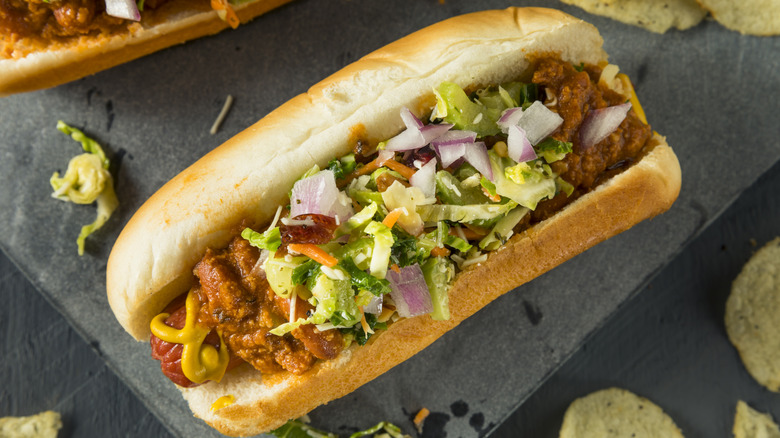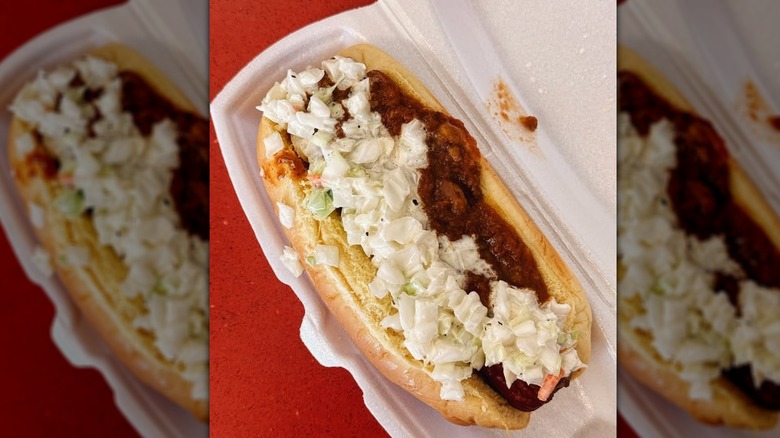West Virginia-Style Hot Dogs Put A Unique Topping Combo In The Spotlight
Hot dog toppings are serious business — just try stepping in between a New Yorker and a Chicagoan on the topic. While the big cities' glizzy traditions may be what immediately spring to mind when you're thinking about regional wieners, there's actually a major contender lurking just outside the cosmopolitan field of view: the West Virginia-style hot dog. With mind-blowing taste and an accessible assortment of toppings, you're going to want to assemble these at your next cookout.
Appalachia may be known for cobbler, cornbread, and pepperoni rolls, but West Virginia dogs are a relatively rare treat many of you didn't know you were missing. They're bathed in a combination of what's deemed "sauce" (a chili-like condiment not unlike Cincinnati's Skyline chili in its thin consistency), yellow mustard, and onions. That's then topped with a crowning layer of coleslaw. West Virginians aren't the only ones to put slaw on sausage (the crunchy topping is what makes Venezuelan hot dogs different), but the iconic pairing of chili and slaw is what makes West Virginia wieners stand out in an amazing way.
These hot dogs are rooted in hard times
The small details are what make a West Virginia hot dog unique — the toppings really need to go the distance. For one, the slaw should be sweet; the sauce can be spicy or not, but it absolutely should not have beans (it's closest to a thin chili con carne); and the onions should be diced, fresh, and crispy. You could probably omit the zigzag of mustard if you really wanted to, but it adds a tangy zing that cuts through the rich flavors of the sauce and slaw beautifully. Like a New England hot dog bun, the bread that enrobes a West Virginia hot dog is usually steamed and pillowy.
It's been theorized that the West Virginia hot dog came about during the Great Depression as a handheld, portable lunch for working men doing intense physical labor. It could be eaten standing up on a quick lunch break and it was inexpensive, yet filling. The quality of the hot dog was not a make-or-break detail, unlike ritzy big city dogs, because it was going to be drowned in toppings anyway. None of the ingredients were going to break the bank, but they'd sustain you for another lengthy shift mining coal. City folk may not have any post-lunch plans more strenuous than perfecting spreadsheets or attending climate-controlled meetings, but a West Virginia hot dog will still hit the spot.

